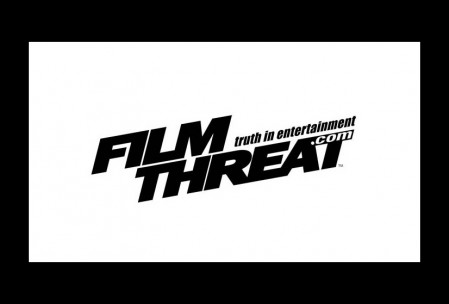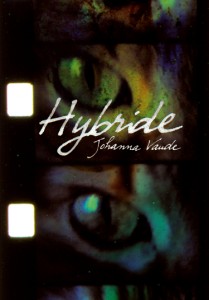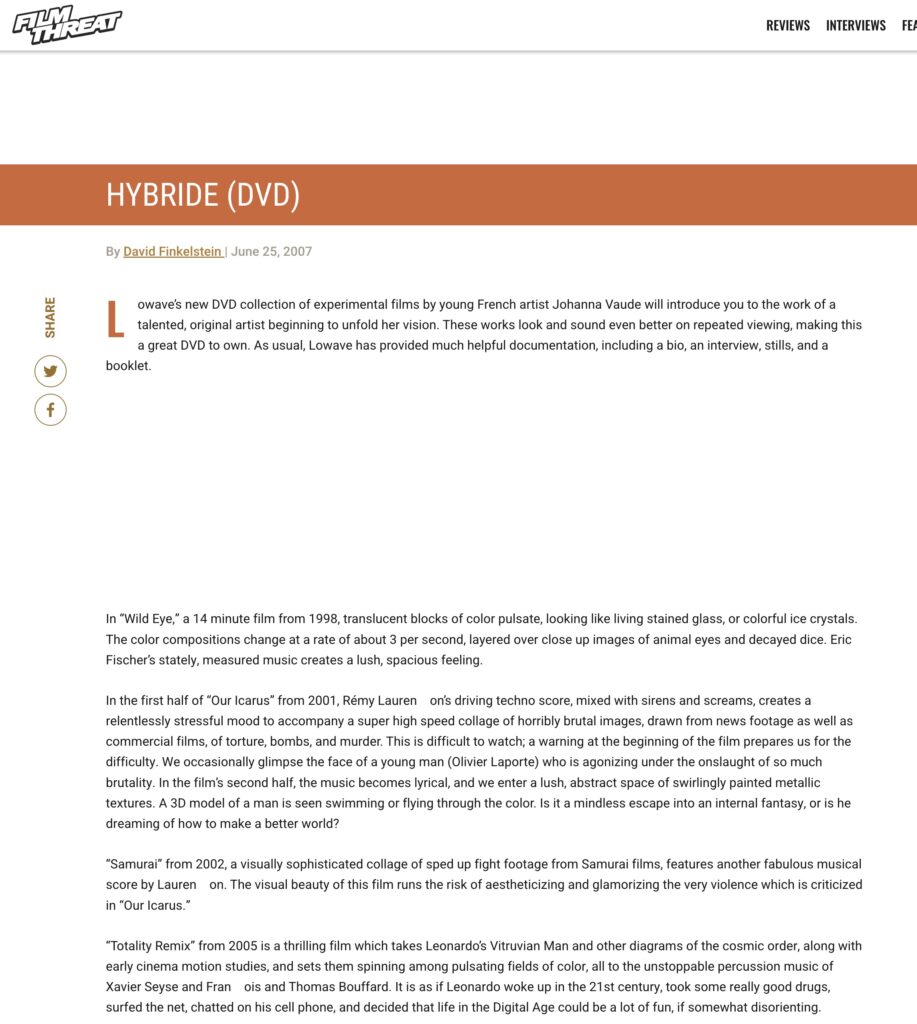Film Threat
Read the review online : « Hybride dvd » by David Filkenstein

Lowave’s new DVD collection of experimental films by young French artist Johanna Vaude will introduce you to the work of a talented, original artist beginning to unfold her vision. These works look and sound even better on repeated viewing, making this a great DVD to own. As usual, Lowave has provided much helpful documentation, including a bio, an interview, stills, and a booklet.
In “Wild Eye,” a 14 minute film from 1998, translucent blocks of color pulsate, looking like living stained glass, or colorful ice crystals. The color compositions change at a rate of about 3 per second, layered over close up images of animal eyes and decayed dice. Eric Fischer’s stately, measured music creates a lush, spacious feeling.

In the first half of “Our Icarus” from 2001, Rémy Laurenon’s driving techno score, mixed with sirens and screams, creates a relentlessly stressful mood to accompany a super high speed collage of horribly brutal images, drawn from news footage as well as commercial films, of torture, bombs, and murder. This is difficult to watch; a warning at the beginning of the film prepares us for the difficulty. We occasionally glimpse the face of a young man (Olivier Laporte) who is agonizing under the onslaught of so much brutality. In the film’s second half, the music becomes lyrical, and we enter a lush, abstract space of swirlingly painted metallic textures. A 3D model of a man is seen swimming or flying through the color. Is it a mindless escape into an internal fantasy, or is he dreaming of how to make a better world?
“Samurai” from 2002, a visually sophisticated collage of sped up fight footage from Samurai films, features another fabulous musical score by Laurenon. The visual beauty of this film runs the risk of aestheticizing and glamorizing the very violence which is criticized in “Our Icarus.”
“Totality Remix” from 2005 is a thrilling film which takes Leonardo’s Vitruvian Man and other diagrams of the cosmic order, along with early cinema motion studies, and sets them spinning among pulsating fields of color, all to the unstoppable percussion music of Xavier Seyse and Franois and Thomas Bouffard. It is as if Leonardo woke up in the 21st century, took some really good drugs, surfed the net, chatted on his cell phone, and decided that life in the Digital Age could be a lot of fun, if somewhat disorienting.

